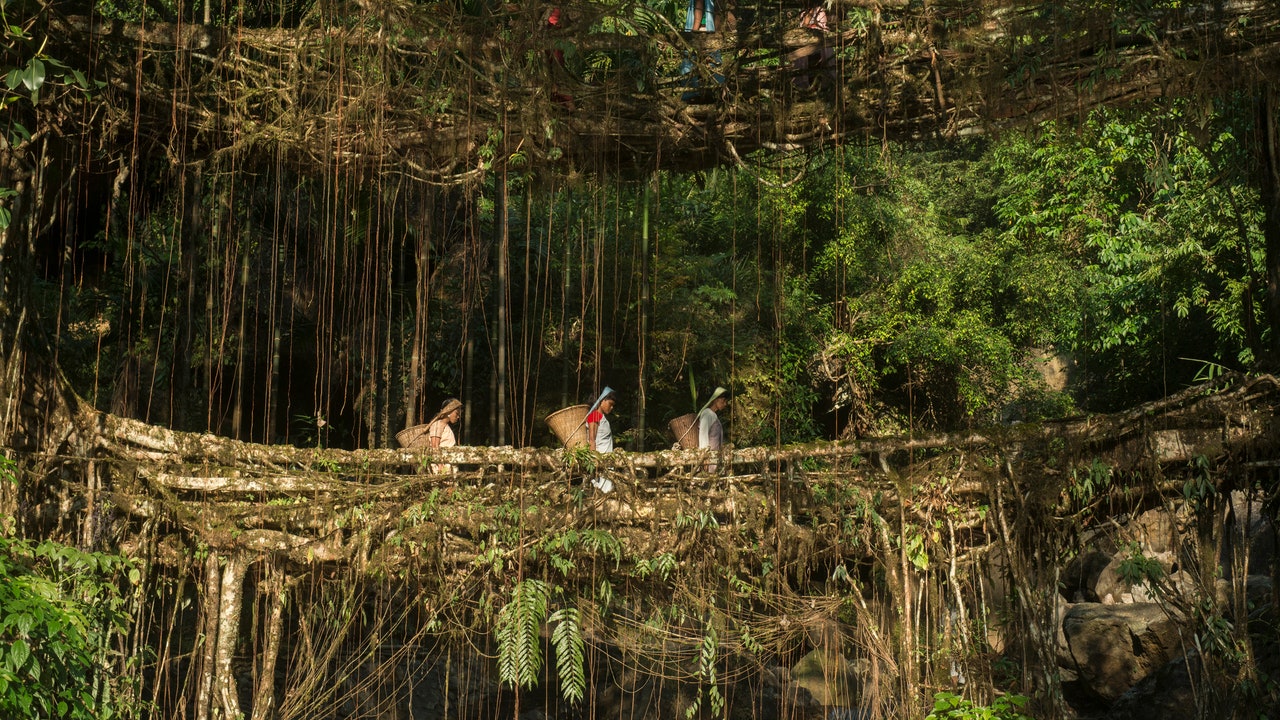We’re beginning to understand a great irony of climate change: that the people most affected by it often did the least to cause it. What’s less discussed is that many of those people also have the technology, philosophy, and knowledge that could have prevented the rising temperatures, the uncontrollable wildfires, and the dying coral reefs in the first place.
They’re people like the Chagga in Tanzania, whose forest agriculture systems support Mount Kilimanjaro’s rich biodiversity and feed a rapidly-growing population. Or the Kayapó in the Amazon Basin, who use fire to cultivate their crops, replenish the soil, and protect their land from deforestation. In Iran, Persians have developed qanats, or underground aqueducts, which serve as natural foils to our energy-intensive pumps and wells. Then there’s the Khasi people of Meghalaya, India—known as the wettest place on earth—who have a solution for navigating heavy rains and monsoons: They’ve trained rubber fig trees to grow across rivers. Over the course of decades, the massive roots grow, tangle, and strengthen into the only bridges—natural or otherwise—that can withstand surging water levels and powerful storms.
These are people who were embracing regenerative agriculture, zero-waste living, and nature-based solutions long before they were 2020 buzzwords. Architect, landscape designer, and Harvard and Columbia professor Julia Watson traveled across 18 countries for six years to visit these communities and document their ways of life in her new book, Lo-TEK: Design by Radical Indigenism, published by Taschen earlier this year. Beyond shining a light on their cultures and innovations, Watson illustrates how indigenous methods actually benefit the planet—and how they might be adopted worldwide in the face of climate crisis.
